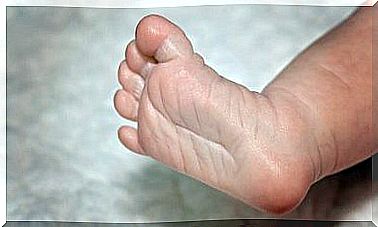5 Symptoms Of Appendicitis In Children

The appendix is an organ as puzzling as it is conflicting. As the name implies, it is a formation of up to 10 centimeters that extends through the large intestine. The main symptom of appendicitis is the famous sharp and constant pain, which makes it difficult to walk.
When this unpleasant situation occurs, it should not be necessary to wait for more symptoms of appendicitis to appear before going to the doctor. Next, we will learn a little more about this painful pathology.
What is appendicitis?
There are several reasons why this small organ can become inflamed. Basically, the passage or flow of the large intestine is obstructed, which causes inflammation. This manifests as discomfort in the right side of the abdomen, at the level of the navel.
Once inflammation occurs, appendix infection starts to be generated due to the inability to release toxins from its interior. In this way, the pain increases considerably and gradually, until you no longer feel pain only in the middle area of the abdomen, but also in the lower part.
If appendicitis does not receive prompt treatment, the infection can cause an abscess that triggers tissue rupture. This result is called peritonitis and can be fatal.
5 symptoms of appendicitis
To a greater or lesser extent, in any case of appendicitis, the patient will manifest the generality of the following symptoms:
- Severe pain in the middle and lower abdomen, usually on the right side. Also stiffness in the affected area and inflammation.
- Vomiting, lack of appetite, dizziness.
- Fever.
- Diarrhea and constipation.
- Increased leukocytes in the blood count.
Next, we’ll look at each point for a better understanding of the symptoms of appendicitis.

1. Acute pain
In the first hours of the picture, when the appendix inflammation is still recent, the perceived pain is diffuse and located around the navel. Over the hours, the brain can distinguish the origin of nerve signals. Before the first 24 hours have passed, the pain of the appendix inflammation is transferred to the lower abdomen.
This location of the inflammation, added to the description of the patient’s suffering, is usually sufficient for a first medical diagnosis.
2. Lack of appetite, dizziness and vomiting
These appendicitis symptoms are usually considered together or separate as all three are not always present. However, the intense pain is accompanied, to a greater or lesser degree, by the aforementioned signs.
Appendicitis itself cannot be diagnosed by dizziness, vomiting or lack of appetite alone. Like the other symptoms listed, it is pain located in a specific area – periumbilical – that really sounds the alarm for appendicitis.
3. Fever
Fever is a body’s defense mechanism whose action varies from person to person. Within the symptoms of appendicitis, fever may not necessarily signal alarm. In general, values do not exceed 38°C.
In practice, body temperature can increase considerably if appendicitis thrives and perforation occurs. In this case, the infection would be of complex severity, since the feces would come into contact with the abdominal area.
4. Constipation or diarrhea
The presence or absence of diarrhea as a symptom of appendicitis derives from the distance to the pelvic area. When the rectum is within the area of inflammation, this symptom can occur. Stools do not necessarily lose consistency, although the frequency between each bowel movement increases.
On the other hand, constipation is considered an atypical symptom within the pathology. It is mentioned simply because, if it appears, it is likely to be part of the same picture.

5. Increased leukocytes
Leukocytes are the body’s defense cells. Your count is done by a simple analysis in the laboratory. If its proportions are increased, it will be a clear sign that external factors are triggering an inflammatory or infectious process.
If the number corresponding to the amount of white blood cells is high, it means that the inflammation has worsened. This way, the immune system will produce more white blood cells.
In short, all symptoms of appendicitis should be analyzed based on the area and type of abdominal pain the patient expresses. In general, your doctor will recommend removing the organ to prevent serious infections in the future.
Healthy living and playing sports, avoiding a sedentary lifestyle and eating a balanced diet may be the best way to prevent appendicitis, both in young people and children as well as in adults.









